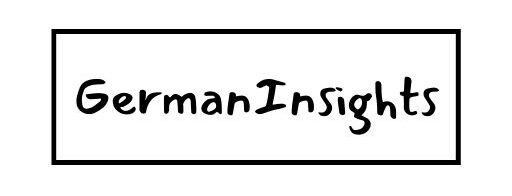
A Journey Through German Art: From Medieval to Modern
- Entertainment & Culture
- 8 October 2024
- 4 Mins
- Last Updated: 4 November 2024
German art has continuously evolved, reflecting the nation’s shifting identity and its place in the world. This journey through German art will explore key periods: Medieval, Renaissance, Baroque, 19th Century, and Modern, highlighting the unique cultural influences that have shaped its development.

Medieval Period (c. 500 - 1400 AD)
The Medieval period in German art is characterized by its strong religious focus, with the Church playing a pivotal role in patronizing the arts.
This era saw the rise of Romanesque and Gothic architecture, exemplified by the majestic Cologne Cathedral and Bamberg Cathedral. Gothic architecture, with its soaring spires and intricate details, became a hallmark of German cathedrals, influencing their design and construction.
Illuminated manuscripts, such as the Book of Kells, are another significant aspect of this period. These manuscripts not only served as religious texts but also as works of art, preserving knowledge and showcasing the intricate beauty of medieval craftsmanship.

Renaissance Period (c. 1400 - 1600 AD)
The Renaissance brought a wave of humanism and realism to German art, heavily influenced by the Italian Renaissance.
Key artists like Albrecht Dürer, Lucas Cranach the Elder, and Matthias Grünewald emerged during this period, contributing to the development of portraiture and printmaking.
Dürer’s portraits and engravings, Cranach’s detailed woodcuts, and Grünewald’s emotive religious scenes reflect the era’s focus on human emotions and the natural world. The rise of printmaking also played a crucial role in disseminating art and ideas, making art more accessible to the public.

Baroque Period (c. 1600 - 1750 AD)
The Baroque period in German art is marked by its dramatic, emotional, and dynamic style.
Influenced by the Counter-Reformation, religious art during this time aimed to inspire faith and devotion. Artists like Johann Balthasar Neumann, Cosmas Damian Asam, and Egid Quirin Asam created opulent and dramatic works, both in architecture and sculpture.
Baroque architecture, with its grandiose designs and intricate details, can be seen in the churches and palaces of this period. Secular art also flourished, with portraiture capturing the drama and movement characteristic of Baroque style.

19th Century
The 19th century saw the rise of Romanticism, Realism, and Impressionism in German art.
Caspar David Friedrich’s landscapes epitomize German Romanticism, capturing the sublime beauty of nature and the human experience. Adolph Menzel’s genre scenes and Max Liebermann’s Impressionist paintings reflect the influence of French art movements and the focus on social issues.
This period marked a shift towards capturing everyday life and the natural world, with artists exploring new techniques and perspectives.

Modern Period (c. 1900 - Present)
The Modern period in German art is characterized by a diverse range of movements and themes. Let’s explore some of the key movements and artists that have shaped this era:
Expressionism
Expressionism emerged in the early 20th century, reflecting societal anxieties and emotional intensity. Artists like Ernst Ludwig Kirchner and Käthe Kollwitz used bold colors and distorted forms to convey deep emotional experiences.
Bauhaus
Founded by Walter Gropius in 1919, the Bauhaus school revolutionized design and architecture with its emphasis on functionality and simplicity. The Bauhaus movement influenced various aspects of art, including furniture design, typography, and architecture.
Dadaism
Dadaism, with artists like Kurt Schwitters, emerged as a reaction to the horrors of World War I. This movement embraced absurdity and challenged traditional art forms through collage, assemblage, and performance art.
Contemporary Art
From medieval manuscripts to modern installations, German art has left an indelible mark on the world. Its evolution reflects the nation’s complex history, its cultural dynamism, and its enduring quest for creative expression. The journey through German art history showcases a rich tapestry of styles and movements, each contributing to the vibrant and diverse artistic heritage of Germany.
German art’s impact extends far beyond its borders, influencing global art movements and inspiring countless artists around the world. The legacy of German art is a testament to the power of creativity and the human spirit.




